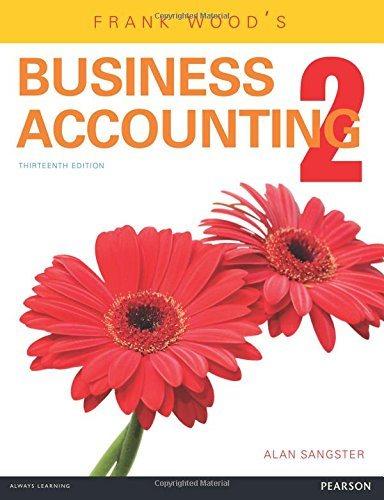Question 1 5 pts
(TCO 1). Leonard Inc. owns 30% of Bowling Inc. and appropriately applies the equity method. During the current year, Bowling bought inventory costing $52,000 and then sold it to Leonard for $80,000. At year-end, all of the merchandise had been sold by Leonard to other customers. Which amount of unrealized intercompany profit must be deferred by Leonard?
Flag this Question
Question 2 5 pts
(TCO 1) Cary Co. appropriately uses the equity method to account for its investment in Clear Corp. As of the end of 20x1, Clear's common stock had suffered a significant decline in fair value, which is expected to be recovered over the next several months. How should Cary account for the decline in value?
| | Cary should switch to the fair value method. |
| | No accounting is necessary, because the decline in fair value is temporary. |
| | Cary should decrease the balance in the investment account to the current value and recognize a loss on the income statement. |
| | Cary should not record its share of Clear's 20x1 earnings until the decline in the fair value of the stock has been recovered. |
| | Cary should decrease the balance in the investment account to the current value and recognize an unrealized loss on the balance sheet. |
Flag this Question
Question 3 5 pts
(TCO 1) After allocating cost in excess of book value, which asset or liability would not be amortized over a useful life?
| | Property, plant, and equipment |
Flag this Question
Question 4 5 pts
(TCO 2) Which of the following internal record-keeping methods can a parent choose to account for a subsidiary acquired in a business combination?
| | Initial value or book value |
| | Initial value, lower-of-cost-or-market-value or equity |
| | Initial value, equity or partial equity |
| | Initial value, equity or book value |
| | Initial value, lower-of-cost-or-market-value or partial equity |
Flag this Question
Question 5 5 pts
(TCO 2) In a transaction accounted for using the purchase method where cost is less than fair value, which statement is true?
| | Negative goodwill is recorded. |
| | A deferred credit is recorded. |
| | Long-term assets of the acquired company are reduced in proportion to their fair values. Any excess is recorded as a deferred credit. |
| | Long-term assets of the acquired company are reduced in proportion to their fair values. Any excess is recorded as an extraordinary gain. |
| | Long-term assets and liabilities of the acquired company are reduced in proportion to their fair values. Any excess is recorded as an extraordinary gain. answer abcd for all questions, recieve thumbs up ^^ |






